Opinion & Analysis
GolfWRXer gets fit for 913’s at TPI
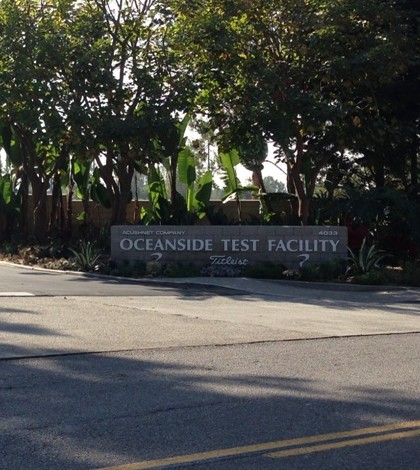
Buying new golf gear is fun, but buying a new driver is like buying a new car. Golfers look forward to seeing which ones look good to their eye and test-driving them. Then they find out which ones perform the best and tune them to their personal preferences.
This year’s crop of drivers, with their great looks and updated technology, make the decision of which new driver to purchase even tougher than in years past.
I’ve played the Titleist 910D3 (8.5 degrees) since it was released in 2010. I figured 2013 would be a good time to re-evaluate my long-game equipment and possibly upgrade. The driver spot in my bag has been a back-and-forth battle between my Titleist gamer with a UST VTS Black shaft and my TaylorMade SuperFast 2.0 with a Fujikura Speeder 6.2 shaft.
I have always hit the 910 better, but was losing about 10 yards to the 2.0. I was immediately attracted to the classy, subtle look and black head of the 913 driver, and was pretty much convinced that I needed the 913 line in my bag as long as it could outperform my current clubs.
After a ton of research on GolfWRX and other sources, I came to the conclusion that all driver heads are relatively created equal to extent of max distance. The underlying factor that can help us achieve greater distance and dispersion is being properly fit. What better place to be fit than where the Titleist staff goes, TPI in Oceanside, Calif.?
From Titleist:
Golf is all about confidence, in your game and your equipment. That’s why Titleist designs the highest performing equipment and offers the most precise club fitting experience in the game. Titleist’s approach to fitting begins with a unique understanding of players’ performance needs born from working with PGA Tour players, PGA Professionals and amateurs serious about getting better. Our highly skilled team of fitters utilizes the most advanced tools to help players optimize driver performance, make iron play more precise, dial in their wedges and fine-tune set compositions.
Many people are not aware that TPI as actually open to the public and a regular chop like myself can experience the same Tour Level fitting that guys like Steve Stricker, Jason Dufner and Zach Johnson did just a day prior to my arrival (note: I paid, they didn’t). The facility was built about 15 years ago and has a staff of about 25. TPI was initially built for Titleist R&D, golf ball and equipment testing, and as a place to give staffers a place to practice and be fit. At one time, TPI actually created and operated their own fitting equipment, but that was long before the days of golf radar systems. The place looks like Fort Knox from the outside, but it’s actually extremely easy to set an appointment and gain access.
Currently the facility is still used for R&D, and as the studio for Golf Fitness Academy that is entering season nine on Golf Channel.
Once inside TPI, you’re hit with visions of golf heaven. The driving range has perfectly cut fairways, manicured greens and multiple bunkers with different types of sand. It is paradise for practice and testing equipment.
Before you even put your car in park there is someone there to greet you, grab your bag and escort you inside. They first took me on a tour of the facility, showing me the Academy Studio, 3D Fitting and practice areas. After the tour, I was shown the locker room where I changed into my shoes and was off to my fitter to get started.
My fitter had just completed a ball fitting the day prior with Jason Dufner for the new Pro V1 that will be coming to retail soon. He told me he spent 22 weeks on the PGA Tour last year, so I knew that I was in good hands and that he would help me get the most out of my equipment.
He asked a few basic questions about my game, ball flight, what I like about my current clubs, what I didn’t like. He also asked me what shafts or heads interested me and what ball I currently played. I explained to him that basically I wanted the distance of my Superfast 2.0 but with the same consistency I got with my 910.
All testing was completed with essentially brand new 2011 Pro V1Xs, and five shots were hit with each driver combination before moving on to the next.
The range is in effect a fairway with trees down each side and bunkers that you can work the ball off. It’s not like hitting on a normal range and it really gives you the perspective of playing on a course.
Fitting the driver
We started by hitting both of my current drivers (yes, I brought a TaylorMade driver on Titleist turf).
The first club he handed me was a 9.5 913 D3 with the stock Mitsubishi Diamana D+ White 72X (standard tipping). Next he changed to the 8.5 head and the same shaft but tipped one inch. He stopped me every now and then to make an adjustment on the SureFit hosel or change the swing weight. He was taking notes the entire time, evaluating my tendencies, ball flight and asking questions about “how something felt.” We probably went through 15 to 20 head and shaft combinations before he had me dialed into an 8.5 D3 with a Fujikura Speeder TS 6.2X shaft (tipped 1 inch) at 44.5 inches.
Next he wanted me to hit the same setup, but in the D2 head. In the past, I was never able to play a D2 because it spun too much and launched too high. He explained the changes that were made to the 913 D2, asked me how I thought it looked at address and told me to hit a few balls. Immediately, I gained extra confidence from the bigger head and face. My best shots were as good as anything with the D3, and my misses were not nearly as punishing.
I don’t play or practice nearly as much as I would like, and having the extra forgiveness for off days is something that could really assist me. After deciding on the combo, I then asked if we could test a few more shafts in the 8.5-degree D2 and again in 7.5 degrees. After going back through and hitting about four more combos in Round 2, it was pretty clear that we found a winner. At this point we had spent about an hour and half and probably hit close to 100 balls with different drivers.
I spent a little bit of time comparing the D2 and D3, setting them next to the ball and taking a close look at the appearances. To me, the D2 inspires more confidence without looking too bulky. I think the 913 D3 is a definite upgrade over the 910 D3 – it’s far less punishing on mishits and has a more explosive feel. But I think the 913 D2 is a head that will surprise a lot of people, and years from now it will be the one that golfers remember. It’s very low spinning, yet workable and forgiving.
One noticeable difference between the D2 and D3 (besides appearance) is the sound. The D2 sounds explosive, but has a much lower pitch than the louder D3. This has something to do with the way the acoustics vibrate in the larger 460cc head versus the smaller 445cc head. They have been fitting more and more staffers into the D2 this year, although most players haven’t changed yet. My fitter told me that many players are expected to change as they get more comfortable with the new head.
Here are my final numbers with the driver:
- Head: 2013 Titleist 913 D2 (8.5 degrees in B1 setting)
- Shaft: Speeder TS 6.2X (tipped 1 inch)
Stats (Averages):
- Ball Speed: 158 mph
- Launch: 12.6 degrees
- Spin: 2256 rpms
- Smash: 1.49
- Carry: 265 yards
- Land Angle: 40.4 degrees
Click here for more discussion in the “Equipment” forum.
Fitting the 3 Wood:
We both knew that fitting the 3 wood would be much quicker since we had already seen what worked in the driver and knew what I liked. Again, my fitter had me hit my current setup to get a base line. He gave me a 913 FD (15 degree) with a Fujikura Speeder TS 7.2X shaft. I hit one ball and almost immediately after the ball left the club I said, “Man, that felt good.” The numbers from the first combo were almost ideal and I asked if we even needed to hit anything else? He chuckled, took the club from my hands and changed the shaft to an 8.2X. He also changed the setting to B1 and told me to hit some more balls.
The new fairways are pretty much perfect on every level — sound, feel, flight and distance. The new FD is far easier to hit off the deck than the prior model. Even so, I also hit the F version with a few different shafts. Although we found some good combos and smooth shafts, the clear-cut winner was the 913 FD (15 degrees) with a Speeder TS 8.2X shaft (tipped 1 inch) in the B1 setting.
Here are my final numbers with the 3 wood:
- Head: 2013 Titleist 913 FD (15 Degree in the B1 setting)
- Shaft: Fujikura Speeder TS 8.2X (tipped 1 inch)
Stats (Average):
- Ball Speed: 151 mph
- Launch: 9.7 degrees
- Spin: 3426 rpms
- Smash: 1.48
- Carry: 240 wards
- Land Angle: 49.3 degrees
Click here for more discussion in the “Equipment” forum.
Hybrid:
Before we got started on hybrids, I was thinking to myself that there was no way they would get me out of my current Adams A12 18-degree hybrid with a Fujikura Speeder HB90 Tour Issue shaft. I saw him dig into the bottom of his case into some sort of hidden compartment and out came the Titleist 913 HD (your welcome). The closest thing he had to the Fujikura Speeder TS was Fujikura’s Motore F3 95, and he recommended that I stay in the same family of shafts for all three clubs to keep the feel consistent throughout the set.
I could clearly see the group of five balls from my current hybrid in the middle of the fairway about 225 yards away. All five of my shots with the first combo were landing well past my current setup and with a much more playable flight. I was literally hitting the hybrid too far, and thought that there would be too much of a gap with my irons. That’s why we tried the 20-degree hybrid with the same shaft, but we ended up going back to the 18 degree, adding 0.75 degrees of loft to it with the D3 setting on the SureFit hosel.
(Note: The HD hybrids will be available through custom order in February 2013 and will offer a smaller shape, more offset and lower spin than the 913 H hybrids).
Here’s are my final numbers for the hybrid:
- Head: Titleist 913 HD (18 degrees in the D4 setting)
- Shaft: Fujikura F3 Motore 95
Stats (Average):
- Ball Speed: 144 mph
- Launch: 12.3 degrees
- Spin: 3589 rpms
- Carry: 226 yards
- Land Angle: 42.3 degrees
The most beneficial aspect of myTPI experience was the knowledge gained during the process. The fitters there are open encyclopedias, eager to answer any question and ready to share their knowledge.
I have gone twice now (last time for irons and wedges), and have learned more about equipment there than I have learned from any other fitting. The fitters are extremely patient and will let you hit any combo or club that you desire, even when they know it won’t work for you, just so you can see for yourself. Everyone that works at the facility went out of his or her way to make me feel welcome. Other employees will come out to check in on the fitting, bring you water and just make you feel welcomed and important. I hope that this review can be as helpful for the members interested as I did my best to share as much of the information and experience as I could. I will do my best to answer any questions.
Click here for more discussion in the “Equipment” forum.
- LIKE0
- LEGIT0
- WOW0
- LOL0
- IDHT0
- FLOP0
- OB0
- SHANK0
19th Hole
Vincenzi’s 2024 Zurich Classic of New Orleans betting preview

The PGA TOUR heads to New Orleans to play the 2023 Zurich Classic of New Orleans. In a welcome change from the usual stroke play, the Zurich Classic is a team event. On Thursday and Saturday, the teams play best ball, and on Friday and Sunday the teams play alternate shot.
TPC Louisiana is a par 72 that measures 7,425 yards. The course features some short par 4s and plenty of water and bunkers, which makes for a lot of exciting risk/reward scenarios for competitors. Pete Dye designed the course in 2004 specifically for the Zurich Classic, although the event didn’t make its debut until 2007 because of Hurricane Katrina.
Coming off of the Masters and a signature event in consecutive weeks, the field this week is a step down, and understandably so. Many of the world’s top players will be using this time to rest after a busy stretch.
However, there are some interesting teams this season with some stars making surprise appearances in the team event. Some notable teams include Patrick Cantlay and Xander Schauffele, Rory McIlroy and Shane Lowry, Collin Morikawa and Kurt Kitayama, Will Zalatoris and Sahith Theegala as well as a few Canadian teams, Nick Taylor and Adam Hadwin and Taylor Pendrith and Corey Conners.
Past Winners at TPC Louisiana
- 2023: Riley/Hardy (-30)
- 2022: Cantlay/Schauffele (-29)
- 2021: Leishman/Smith (-20)
- 2019: Palmer/Rahm (-26)
- 2018: Horschel/Piercy (-22)
- 2017: Blixt/Smith (-27)
2024 Zurich Classic of New Orleans Picks
Tom Hoge/Maverick McNealy +2500 (DraftKings)
Tom Hoge is coming off of a solid T18 finish at the RBC Heritage and finished T13 at last year’s Zurich Classic alongside Harris English.
This season, Hoge is having one of his best years on Tour in terms of Strokes Gained: Approach. In his last 24 rounds, the only player to top him on the category is Scottie Scheffler. Hoge has been solid on Pete Dye designs, ranking 28th in the field over his past 36 rounds.
McNealy is also having a solid season. He’s finished T6 at the Waste Management Phoenix Open and T9 at the PLAYERS Championship. He recently started working with world renowned swing coach, Butch Harmon, and its seemingly paid dividends in 2024.
Keith Mitchell/Joel Dahmen +4000 (DraftKings)
Keith Mitchell is having a fantastic season, finishing in the top-20 of five of his past seven starts on Tour. Most recently, Mitchell finished T14 at the Valero Texas Open and gained a whopping 6.0 strokes off the tee. He finished 6th at last year’s Zurich Classic.
Joel Dahmen is having a resurgent year and has been dialed in with his irons. He also has a T11 finish at the PLAYERS Championship at TPC Sawgrass which is another Pete Dye track. With Mitchell’s length and Dahmen’s ability to put it close with his short irons, the Mitchell/Dahmen combination will be dangerous this week.
Taylor Moore/Matt NeSmith +6500 (DraftKings)
Taylor Moore has quickly developed into one of the more consistent players on Tour. He’s finished in the top-20 in three of his past four starts, including a very impressive showing at The Masters, finishing T20. He’s also finished T4 at this event in consecutive seasons alongside Matt NeSmith.
NeSmith isn’t having a great 2024, but has seemed to elevate his game in this format. He finished T26 at Pete Dye’s TPC Sawgrass, which gives the 30-year-old something to build off of. NeSmith is also a great putter on Bermudagrass, which could help elevate Moore’s ball striking prowess.
- LIKE7
- LEGIT3
- WOW1
- LOL1
- IDHT0
- FLOP3
- OB1
- SHANK1
19th Hole
Vincenzi’s 2024 LIV Adelaide betting preview: Cam Smith ready for big week down under

After having four of the top twelve players on the leaderboard at The Masters, LIV Golf is set for their fifth event of the season: LIV Adelaide.
For both LIV fans and golf fans in Australia, LIV Adelaide is one of the most anticipated events of the year. With 35,000 people expected to attend each day of the tournament, the Grange Golf Club will be crawling with fans who are passionate about the sport of golf. The 12th hole, better known as “the watering hole”, is sure to have the rowdiest of the fans cheering after a long day of drinking some Leishman Lager.
The Grange Golf Club is a par-72 that measures 6,946 yards. The course features minimal resistance, as golfers went extremely low last season. In 2023, Talor Gooch shot consecutive rounds of 62 on Thursday and Friday, giving himself a gigantic cushion heading into championship Sunday. Things got tight for a while, but in the end, the Oklahoma State product was able to hold off The Crushers’ Anirban Lahiri for a three-shot victory.
The Four Aces won the team competition with the Range Goats finishing second.
*All Images Courtesy of LIV Golf*
Past Winners at LIV Adelaide
- 2023: Talor Gooch (-19)
Stat Leaders Through LIV Miami
Green in Regulation
- Richard Bland
- Jon Rahm
- Paul Casey
Fairways Hit
- Abraham Ancer
- Graeme McDowell
- Henrik Stenson
Driving Distance
- Bryson DeChambeau
- Joaquin Niemann
- Dean Burmester
Putting
- Cameron Smith
- Louis Oosthuizen
- Matt Jones
2024 LIV Adelaide Picks
Cameron Smith +1400 (DraftKings)
When I pulled up the odds for LIV Adelaide, I was more than a little surprised to see multiple golfers listed ahead of Cameron Smith on the betting board. A few starts ago, Cam finished runner-up at LIV Hong Kong, which is a golf course that absolutely suits his eye. Augusta National in another course that Smith could roll out of bed and finish in the top-ten at, and he did so two weeks ago at The Masters, finishing T6.
At Augusta, he gained strokes on the field on approach, off the tee (slightly), and of course, around the green and putting. Smith able to get in the mix at a major championship despite coming into the week feeling under the weather tells me that his game is once again rounding into form.
The Grange Golf Club is another course that undoubtedly suits the Australian. Smith is obviously incredibly comfortable playing in front of the Aussie faithful and has won three Australian PGA Championship’s. The course is very short and will allow Smith to play conservative off the tee, mitigating his most glaring weakness. With birdies available all over the golf course, there’s a chance the event turns into a putting contest, and there’s no one on the planet I’d rather have in one of those than Cam Smith.

Louis Oosthuizen +2200 (DraftKings)
Louis Oosthuizen has simply been one of the best players on LIV in the 2024 seas0n. The South African has finished in the top-10 on the LIV leaderboard in three of his five starts, with his best coming in Jeddah, where he finished T2. Perhaps more impressively, Oosthuizen finished T7 at LIV Miami, which took place at Doral’s “Blue Monster”, an absolutely massive golf course. Given that Louis is on the shorter side in terms of distance off the tee, his ability to play well in Miami shows how dialed he is with the irons this season.
In addition to the LIV finishes, Oosthuizen won back-to-back starts on the DP World Tour in December at the Alfred Dunhill Championship and the Mauritus Open. He also finished runner-up at the end of February in the International Series Oman. The 41-year-old has been one of the most consistent performers of 2024, regardless of tour.
For the season, Louis ranks 4th on LIV in birdies made, T9 in fairways hit and first in putting. He ranks 32nd in driving distance, but that won’t be an issue at this short course. Last season, he finished T11 at the event, but was in decent position going into the final round but fell back after shooting 70 while the rest of the field went low. This season, Oosthuizen comes into the event in peak form, and the course should be a perfect fit for his smooth swing and hot putter this week.

- LIKE12
- LEGIT3
- WOW1
- LOL1
- IDHT0
- FLOP1
- OB1
- SHANK1
Opinion & Analysis
The Wedge Guy: What really makes a wedge work? Part 1

Of all the clubs in our bags, wedges are almost always the simplest in construction and, therefore, the easiest to analyze what might make one work differently from another if you know what to look for.
Wedges are a lot less mysterious than drivers, of course, as the major brands are working with a lot of “pixie dust” inside these modern marvels. That’s carrying over more to irons now, with so many new models featuring internal multi-material technologies, and almost all of them having a “badge” or insert in the back to allow more complex graphics while hiding the actual distribution of mass.
But when it comes to wedges, most on the market today are still single pieces of molded steel, either cast or forged into that shape. So, if you look closely at where the mass is distributed, it’s pretty clear how that wedge is going to perform.
To start, because of their wider soles, the majority of the mass of almost any wedge is along the bottom third of the clubhead. So, the best wedge shots are always those hit between the 2nd and 5th grooves so that more mass is directly behind that impact. Elite tour professionals practice incessantly to learn to do that consistently, wearing out a spot about the size of a penny right there. If impact moves higher than that, the face is dramatically thinner, so smash factor is compromised significantly, which reduces the overall distance the ball will fly.
Every one of us, tour players included, knows that maddening shot that we feel a bit high on the face and it doesn’t go anywhere, it’s not your fault.
If your wedges show a wear pattern the size of a silver dollar, and centered above the 3rd or 4th groove, you are not getting anywhere near the same performance from shot to shot. Robot testing proves impact even two to three grooves higher in the face can cause distance loss of up to 35 to 55 feet with modern ‘tour design’ wedges.
In addition, as impact moves above the center of mass, the golf club principle of gear effect causes the ball to fly higher with less spin. Think of modern drivers for a minute. The “holy grail” of driving is high launch and low spin, and the driver engineers are pulling out all stops to get the mass as low in the clubhead as possible to optimize this combination.
Where is all the mass in your wedges? Low. So, disregarding the higher lofts, wedges “want” to launch the ball high with low spin – exactly the opposite of what good wedge play requires penetrating ball flight with high spin.
While almost all major brand wedges have begun putting a tiny bit more thickness in the top portion of the clubhead, conventional and modern ‘tour design’ wedges perform pretty much like they always have. Elite players learn to hit those crisp, spinny penetrating wedge shots by spending lots of practice time learning to consistently make contact low in the face.
So, what about grooves and face texture?
Grooves on any club can only do so much, and no one has any material advantage here. The USGA tightly defines what we manufacturers can do with grooves and face texture, and modern manufacturing techniques allow all of us to push those limits ever closer. And we all do. End of story.
Then there’s the topic of bounce and grinds, the most complex and confusing part of the wedge formula. Many top brands offer a complex array of sole configurations, all of them admittedly specialized to a particular kind of lie or turf conditions, and/or a particular divot pattern.
But if you don’t play the same turf all the time, and make the same size divot on every swing, how would you ever figure this out?
The only way is to take any wedge you are considering and play it a few rounds, hitting all the shots you face and observing the results. There’s simply no other way.
So, hopefully this will inspire a lively conversation in our comments section, and I’ll chime in to answer any questions you might have.
And next week, I’ll dive into the rest of the wedge formula. Yes, shafts, grips and specifications are essential, too.
- LIKE32
- LEGIT7
- WOW1
- LOL1
- IDHT2
- FLOP3
- OB1
- SHANK3
-

 19th Hole2 weeks ago
19th Hole2 weeks agoDave Portnoy places monstrous outright bet for the 2024 Masters
-

 19th Hole2 weeks ago
19th Hole2 weeks agoTiger Woods arrives at 2024 Masters equipped with a putter that may surprise you
-

 19th Hole2 days ago
19th Hole2 days agoJustin Thomas on the equipment choice of Scottie Scheffler that he thinks is ‘weird’
-

 19th Hole2 days ago
19th Hole2 days ago‘Absolutely crazy’ – Major champ lays into Patrick Cantlay over his decision on final hole of RBC Heritage
-

 19th Hole3 weeks ago
19th Hole3 weeks agoReport: Tiger Woods has ‘eliminated sex’ in preparation for the 2024 Masters
-

 19th Hole1 week ago
19th Hole1 week agoTwo star names reportedly blanked Jon Rahm all week at the Masters
-

 19th Hole1 week ago
19th Hole1 week agoReport: LIV Golf identifies latest star name they hope to sign to breakaway tour
-

 19th Hole1 week ago
19th Hole1 week agoNeal Shipley presser ends in awkward fashion after reporter claims Tiger handed him note on 8th fairway



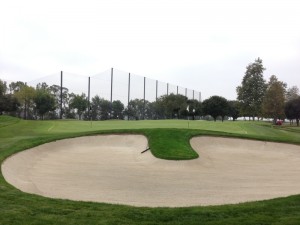
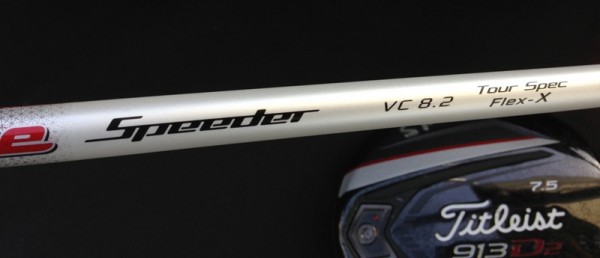
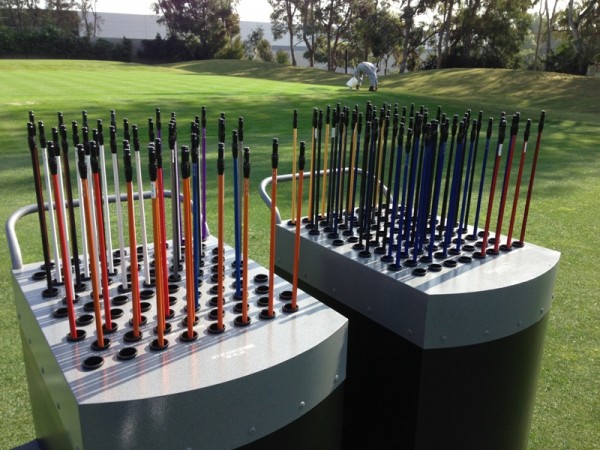
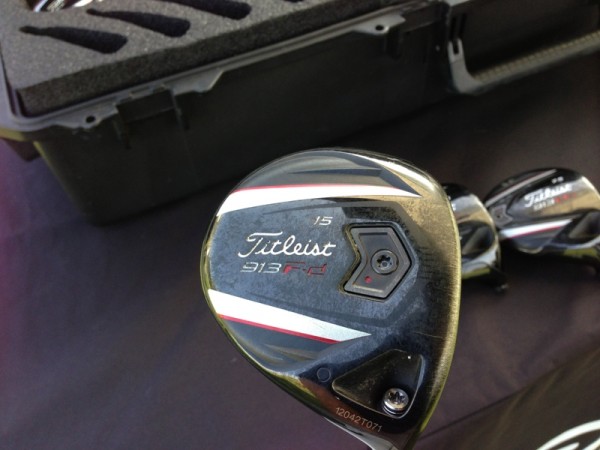
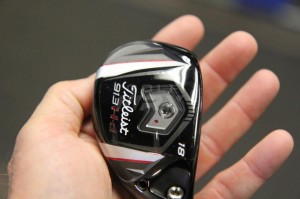
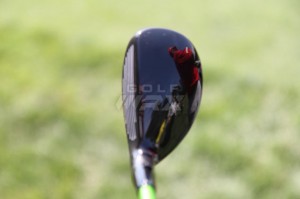


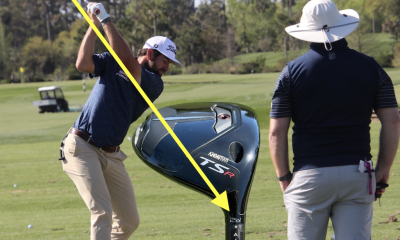



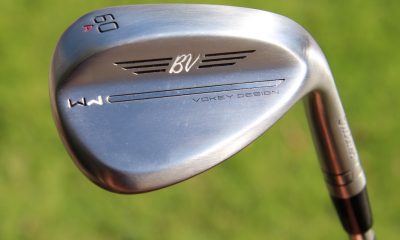

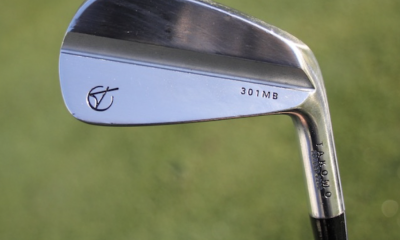

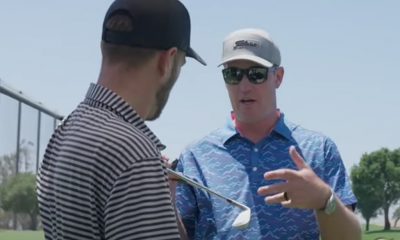

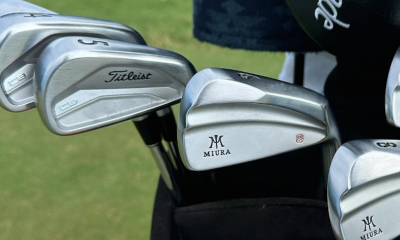













Ritch
Dec 19, 2012 at 10:58 am
I was living in Oceanside when this facility first opened. I visited several times as a club tester. The author is absolutely correct when he describes the place as golf heaven. It is an amazing facility and the conditions are never less than spectacular. Only problem is you probably won’t find playing conditions to match at the courses most of us usually play. I believe the costs for fitting can be found on the Titleist website.
Tom from NE Ohio
Dec 14, 2012 at 10:23 am
1. of course they treated you like a Norse God–don’t you think you might have gotten special red carpet treatment as a lead writer for GolfWrx? And how is it that you have suddenly fallen in love with the look and shape of the 913’s but seem to have overlooked the fact that the 910’s with revolutionary Tour Fit hosels look nearly indistinguishable and are great clubs in their own right!
2. No. 1 notwithstanding, I love the new Titleist products, just got fit by an area pro and upgraded my 910 D2 with Ilima R to a 913 D3 with a Bassara W 50S…dropped my xs spin by nearly 1000 and added 10 yards
Nick
Dec 12, 2012 at 10:44 am
You said you paid, how much did it cost?
Ben
Dec 26, 2012 at 3:24 pm
I did it back in 2010 and it cost $250. Got a full set fitted but had to order through Golfsmith.